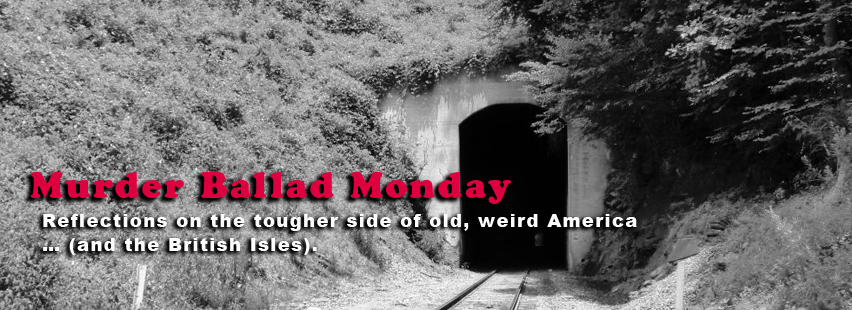“Old Bill Rolling Pin”

Bessie Jones at home on St. Simons Island with two great-grandchildren – photograph by Paul Conklin, 1973 – NARA – public domain
Introduction: “Old Bill Rolling Pin”
Our recent post on “Mother in the Graveyard” dealt in part with encoded lyrics in the music of enslaved African-Americans. That ‘code’ is what today’s post and featured song, “Old Bill Rolling Pin,” is all about.
Well it’s more than code, obviously. The point of code is to convey meaning to some without revealing it to others. But, how do people make and convey secret meaning when all the tools of literacy are denied them? And what power can such meaning hold for those who know the secret? Thanks in equal parts to oral tradition and modern recording, we can understand. Today, I’ll only attempt a scratch at the surface. Even so, if you’ve never considered such things before, it will reveal much.
Bessie Jones (1902-1984) was the granddaughter of emancipated slaves. Raised in the poverty and institutional racism of the Jim Crow south, much of her fun as a young woman came in practicing the music and storytelling of her extended family and community. She dedicated a good deal of her adult life to passing on the wealth of that rich tradition to younger generations. We know her today as an American treasure because of that work.
Jet Sampson, her paternal step-grandfather, came to America as an enslaved African child in the 1840’s and lived to be 105. He taught Bessie the songs and stories he knew firsthand from the antebellum South. “Old Bill Rolling Pin” is one of those songs.
“They still was getting it off their chests…”
The recording comes from the album Put your Hand on Your Hips and Let your Backbone Slip – Rounder Records’ 2001 combined reissue of two of Jones’s albums from the 1970’s. Unfortunately, at date of this entry’s publication, the album is neither available on Spotify nor is much of it on YouTube. I use the track above when I teach American slavery to 8th graders.
Bessie’s spoken introduction to this performance is worth reading in its entirety. It’s critical, in fact.
This is a story what my grandfather told us about when they was a slave, you know. They was under a taskmaster, and so they couldn’t go to a plantation without getting a permit. They had, somebody had to write ‘em… We’re “free” called to be now, but in those days they had to, this is true, they had to get a permit to go to the next plantation. Anybody wanted to see kinfolks there, anything, they had to get permit.
So they had a man on all the plantations round there to go and stay in the fields and go round and see who coming across there out the other plantation, they would be a whipping him. So Pa said that these people would have a man, a large, big tall man, you know, and uh he had a big head and a big face and big eyes and a double chin. Most of them try to get it that way, make it look bad you know. All right.
And this man had a long stick, something like a baseball bat and he would hold it at that little end then they had up on the big end, they had a place cut in that for a whip, called a rawhide whip, you know and made out of cowhide. Now when they whip them slaves they whip anywhere, they whip, so this is a real true song. So they named him Bill Rolling Pin because they didn’t like him, you see, but they was doing it to keep the white folk from knowing just what they was talking about, you see, but they still was getting it off their chest.
All this makes clear that this song operates in a significantly different way than a traditional ballad. Though storytelling is a deep part of traditional African-American culture, there is no narrative here. This is rather akin to a photo album of loosely related snapshots. Without Bessie’s explanation, the lyrics appear to be all show and no tell; childlike and almost nonsensical.
Her introduction, though, gives us the key to see more than the imagery in the song. “Old Bill Rolling Pin” is a coded representation of the ‘patteroller‘, and the point of the song is to secretly express emotion about such oppression – to help black folks ‘get it off their chest’ without white folks understanding. It is both high art and psychological survival tool.
“He wouldn’t do nothing but the possum-la…”
What feelings did black folks ‘get off their chest’ with this song? Knowing the code for ‘patterroller’ doesn’t help much with an answer. It can’t unlock the meaning throughout. However, it does indicate that nothing in the lyrics is what it appears to be. Let’s see what we can find, then. To start with, I’ve come to understand that any animal in antebellum African-American lyrics is probably a stand-in for someone. The most obvious example here is the mule.
The following is an online sample of the book Step It Down by Bessie Jones and Bess Lomax Hawes, originally published in 1972 and reprinted in 1987. It includes a variety of songs and stories from Jones’s repertoire, including “Old Bill Rolling Pin.” Jones’s quote and the passage above the lyrics suggest in fact what becomes obvious with even a little careful consideration. The mule, a stubborn beast of burden, represents the slave. When it won’t gee, the driver beats it with a singletree. When told to haw, the mule instead stays in place and dances.

